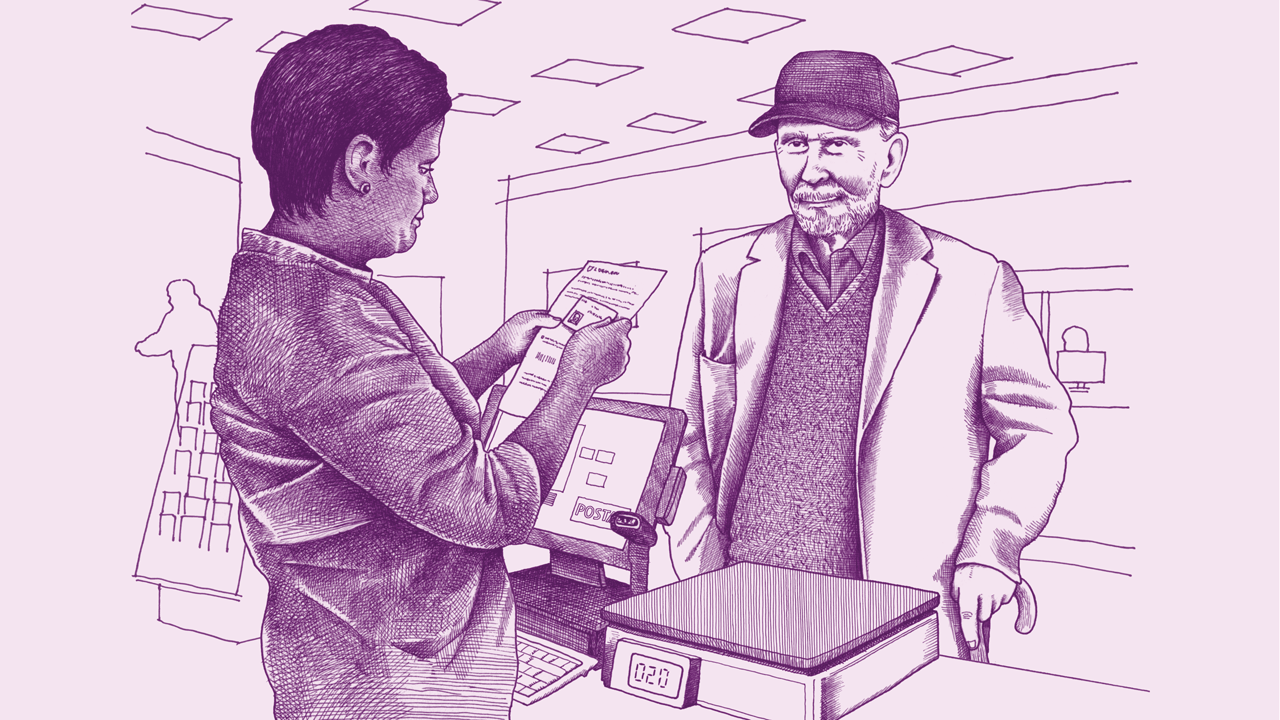Summary
The General Services Administration’s (GSA) Login.gov is the public’s one account for secure, private access to government programs. Some of Login.gov’s partner agencies require people to verify their identities, which is why Login.gov traditionally offers online identity verification that requires people to upload a state-issued ID. However, some people are unable to do this. That's why Nava supported GSA and prime contractor Fearless in building an in-person verification option through local Post Offices. We now continue to optimize in-person proofing (IPP), unlocking access to critical government benefits and services for hundreds of thousands of people.
- 18,000 postal service locations offering in-person proofing (IPP) identity services
- Over 8,000 people have successfully verified their identities using IPP
Approach
GSA’s Login.gov platform offers people secure and private online access to government programs, such as federal benefits, services, and applications. In line with GSA’s mission to deliver effective and efficient government services, Login.gov allows people to use the same username and password to access any partner agency, like USAJOBS, Global Entry, and the U.S. Small Business Administration.
Some of these agencies require people to verify their identities, which oftentimes can be done online. One can upload a state-issued ID which Login.gov checks, along with other personal information, against several databases.
However, sometimes online identity verification can’t be completed. This can occur for several reasons, like if the person doesn't have access to certain technology or if they didn't take a good enough photo of their ID. As a complement to online identity verification, Nava helped GSA build an in-person proofing service, and we continue to optimize it. IPP allows those who are unable to use the online verification process to verify their identities. People can complete in-person verification with a USPS retail associate at a local Post Office.
Outcomes
Earlier this year, the team successfully rolled out IPP to 18,000 of the 31,000 postal locations across the country. As of August 2023, over 8,000 people have successfully verified their identities using IPP. Our shared work has helped make Login.gov accessible to populations who have found it challenging to use this service.
Process
To test the end-to-end IPP experience, we began by launching a regional pilot of IPP at seven postal locations in the Washington, D.C. metro area. This initial usability testing helped uncover bugs, usability issues, and process improvements.
Testing participants then expanded to members of our two pilot partner agencies—the U.S. Department of Veterans Affairs (VA) and the Railroad Retirement Board (RBB). The 90-day pilot gave Veterans and railroad retirees in and around Washington D.C. access to IPP. This phase was critical because it allowed us to understand how actual users of Login.gov would navigate the service.
Next, the team prepared for our rollout of IPP to 18,000 USPS locations across the country. We improved key screens throughout the end-to-end IPP experience and delivered new features like Post Office location search. The latter was especially important since we rolled out to 18,000 of the 31,000 USPS locations, so users needed a way to know which Post Offices offer IPP. We also performed A/B testing to help improve the user experience, and conducted usability testing to better understand what users want out of the service.
Closing Summary
Launching IPP in small bites helped us identify risks early on and synthesize user feedback into further iterations, ultimately allowing us to successfully launch IPP’s nationwide pilot. The limited nationwide pilot allowed Veterans and Railroad Retirees to verify their identities at participating Post Offices across the country. But our work isn’t done—we will continue to use agile methods to improve the service and expand its impact.
Going forward, we plan to research ways to make IPP even more secure so that we can onboard more partner agencies. We’re conducting in-person and remote usability testing to better understand the end-to-end journey of Login.gov, from the digital workflow through on-site USPS interactions.
We’re also exploring ways to make IPP accessible to more diverse populations, such as non-English speakers and residents of Puerto Rico. One way to achieve this is by shifting more of the IPP experience to in-person, because much of it still occurs online. We believe this would make IPP even more accessible to a broad range of people.
Written by
Principal designer
Senior project manager
Senior software engineer
Senior product manager
Editorial Manager

